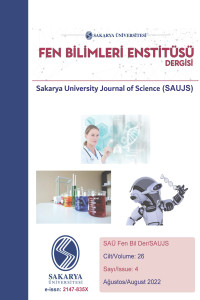Abstract
With the development of technology, artificial intelligence comes into our lives more and also comes up as a solution to many problems. Recently, deep learning approaches have been bringing fast and highly accurate solutions to problems. In this work, within the scope of Advanced Driver Assistance Systems (ADAS), deep learning based driver drowsiness detection system is proposed. First, face regions of drivers are detected using SSD MobileNet object detection method. The aim is to detect the eye, mouth and head positions of the drivers from this face region and to make a situation estimation with the combinations of these detected objects which are “normal”, “drowsy” and “danger”. The proposed approach examines the driver's behaviour over a certain period of time for making a decision, rather than a one-time eye closure or yawning decision. The detected eye, mouth and head positions are monitored and recorded over a period of time. Finally, these merged patterns are classified with Convolutional Neural Networks (CNN). Experimental results show that the performance of proposed novel CNN approach outperforms existing approaches in literature.
Keywords
Supporting Institution
Kocaeli University
Project Number
2019/021
Thanks
This work is supported by Kocaeli University Scientific Research Projects Coordination Unit under grant number 2019/021.
References
- [1] General Directorate of Police. URL http://trafik.gov.tr/kurumlar/trafik.gov.tr/04-Istatistik/Aylik/nisan21.pdf (accessed 5.22.21).
- [2] Turkish Statistical Institute, URL https://data.tuik.gov.tr/Bulten/Index?p=Karayolu-Trafik-Kaza-Istatistikleri-2019-33628, (accessed 22.05.21).
- [3] IIHSHLDI, URL https://www.iihs.org/topics/fatality-statistics/detail/state-by-state#fatal-crash-totals, (accessed 16.6.21).
- [4] Cars, URL https://www.cars.com/articles/drowsy-driver-detection-systems-sense-when-you-need-a-break-1420684409199/#:~:text=BMW%20also%20allows%20you%20to,set%20it%20to%20%E2%80%9Cnormal.%E2%80%9D, (accessed 22.05.21)
- [5] S. Mehta, S. Dadhich, S. Gumber, A. J. Bhatt, “Real-Time Driver Drowsiness Detection System Using Eye Aspect Ratio and Eye Closure Ratio”, Proceedings of International Conference on Sustainable Computing in Science, Technology and Management (SUSCOM), Jaipur - India, February 26-28, 2019.
- [6] M.F. Shakeel, N.A. Bajwa, A.M. Anwaar, A. Sohail, A. Khan, Haroon-ur-Rashid, “Detecting Driver Drowsiness in Real Time Through Deep Learning Based Object Detection”, Advances in Computational Intelligence, IWANN 2019 Lecture Notes in Computer Science, vol 11506, 2019.
- [7] R. Ahmed, K. E. Emon, M. F. Hossain, “Robust driver fatigue recognition using image processing”, 2014 International Conference on Informatics, Electronics & Vision (ICIEV), pp. 1-6, 2014.
- [8] S. Abtahi, M. Omidyeganeh, S. Shirmohammadi, B. Hariri, YawDD, “A yawning detection dataset”, ACM International Conference on Multimedia Systems, Singapore, Singapore, March 19 - 21, 2014.
- [9] C. H. Weng, Y. H. Lai, S. H. Lai, “Driver Drowsiness Detection via a Hierarchical Temporal Deep Belief Network”, Asian Conference on Computer Vision Springer, pp. 117-133, 2016.
- [10] R. Jabbar, M. Shinoy, M. Kharbeche, K. Al-Khalifa, M. Krichen, K. Barkaoui, “Driver Drowsiness Detection Model Using Convolutional Neural Networks Techniques for Android Application”, 2020 IEEE International Conference on Informatics, IoT, and Enabling Technologies (ICIoT), pp. 237-242, 2020.
- [11] S. Ramachandran, S. G. R. Rao and T. Sunder, “Drowsiness Detection Using Image Processing Techniques”, International Research Journal of Engineering and Technology (IRJET), vol. 5, no. 6, 2018.
- [12] A. I. Gaidar and P. Y. Yakimov, “Real-time fatigue features detection”, In: Journal of Physics: Conference Series, vol. 1368, no. 5, 2017.
- [13] J. Yu, S. Park, S. Lee and M. Jeon, “Driver Drowsiness Detection Using Condition-Adaptive Representation Learning Framework”, IEEE Transactions on Intelligent Transportation Systems, vol. 20 no. 11, pp. 4206-4218, 2019.
Abstract
Project Number
2019/021
References
- [1] General Directorate of Police. URL http://trafik.gov.tr/kurumlar/trafik.gov.tr/04-Istatistik/Aylik/nisan21.pdf (accessed 5.22.21).
- [2] Turkish Statistical Institute, URL https://data.tuik.gov.tr/Bulten/Index?p=Karayolu-Trafik-Kaza-Istatistikleri-2019-33628, (accessed 22.05.21).
- [3] IIHSHLDI, URL https://www.iihs.org/topics/fatality-statistics/detail/state-by-state#fatal-crash-totals, (accessed 16.6.21).
- [4] Cars, URL https://www.cars.com/articles/drowsy-driver-detection-systems-sense-when-you-need-a-break-1420684409199/#:~:text=BMW%20also%20allows%20you%20to,set%20it%20to%20%E2%80%9Cnormal.%E2%80%9D, (accessed 22.05.21)
- [5] S. Mehta, S. Dadhich, S. Gumber, A. J. Bhatt, “Real-Time Driver Drowsiness Detection System Using Eye Aspect Ratio and Eye Closure Ratio”, Proceedings of International Conference on Sustainable Computing in Science, Technology and Management (SUSCOM), Jaipur - India, February 26-28, 2019.
- [6] M.F. Shakeel, N.A. Bajwa, A.M. Anwaar, A. Sohail, A. Khan, Haroon-ur-Rashid, “Detecting Driver Drowsiness in Real Time Through Deep Learning Based Object Detection”, Advances in Computational Intelligence, IWANN 2019 Lecture Notes in Computer Science, vol 11506, 2019.
- [7] R. Ahmed, K. E. Emon, M. F. Hossain, “Robust driver fatigue recognition using image processing”, 2014 International Conference on Informatics, Electronics & Vision (ICIEV), pp. 1-6, 2014.
- [8] S. Abtahi, M. Omidyeganeh, S. Shirmohammadi, B. Hariri, YawDD, “A yawning detection dataset”, ACM International Conference on Multimedia Systems, Singapore, Singapore, March 19 - 21, 2014.
- [9] C. H. Weng, Y. H. Lai, S. H. Lai, “Driver Drowsiness Detection via a Hierarchical Temporal Deep Belief Network”, Asian Conference on Computer Vision Springer, pp. 117-133, 2016.
- [10] R. Jabbar, M. Shinoy, M. Kharbeche, K. Al-Khalifa, M. Krichen, K. Barkaoui, “Driver Drowsiness Detection Model Using Convolutional Neural Networks Techniques for Android Application”, 2020 IEEE International Conference on Informatics, IoT, and Enabling Technologies (ICIoT), pp. 237-242, 2020.
- [11] S. Ramachandran, S. G. R. Rao and T. Sunder, “Drowsiness Detection Using Image Processing Techniques”, International Research Journal of Engineering and Technology (IRJET), vol. 5, no. 6, 2018.
- [12] A. I. Gaidar and P. Y. Yakimov, “Real-time fatigue features detection”, In: Journal of Physics: Conference Series, vol. 1368, no. 5, 2017.
- [13] J. Yu, S. Park, S. Lee and M. Jeon, “Driver Drowsiness Detection Using Condition-Adaptive Representation Learning Framework”, IEEE Transactions on Intelligent Transportation Systems, vol. 20 no. 11, pp. 4206-4218, 2019.
Details
| Primary Language | English |
|---|---|
| Subjects | Artificial Intelligence, Software Testing, Verification and Validation |
| Journal Section | Research Articles |
| Authors | |
| Project Number | 2019/021 |
| Publication Date | August 31, 2022 |
| Submission Date | February 15, 2022 |
| Acceptance Date | May 31, 2022 |
| Published in Issue | Year 2022 Volume: 26 Issue: 4 |
Cite
Cited By
Comparison of Deep Learning and Yolov8 Models for Fox Detection Around the Henhouse
Journal of Smart Systems Research
https://doi.org/10.58769/joinssr.1498561
INDEXING & ABSTRACTING & ARCHIVING
Bu eser Creative Commons Atıf-Ticari Olmayan 4.0 Uluslararası Lisans kapsamında lisanslanmıştır .


